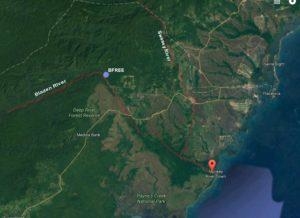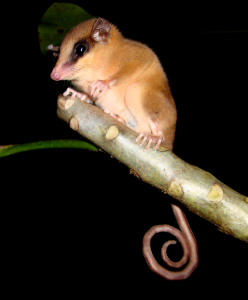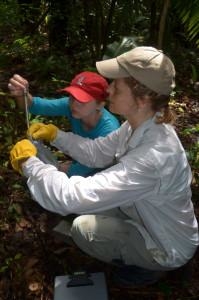BFREE is beginning to realize a long time dream; creating a multi-layered, standardized base mapping system of the entire 1,153-acre property! Under the guidance of Alexis (Lex) Thomas, Director of the GeoPlan Center at the University of Florida and the BFREE Science Committee, the project is well underway. The large-scale mapping project will culminate in a spatial database of the diverse habitats, natural features, and research sites at BFREE. In essence, the BFREE property will be viewed and managed as one large research plot.
The project employs the military grid referencing system (MGRS), which is made up of nested cells to allow for simplification, comprehensiveness, and consistency. A canopy and ground cover classification system was developed for the entire property and was tailored to the characteristics of Belize’s tropical lowland rainforest.
Through the project, the property has been broken down into 100m2 grids. To put this in perspective, if two (densely forested) football fields were side by side, they would include 100 of these smaller 100m2 plots. There are approximately 46,660 of these 100m2 plots on the BFREE property, so initial sampling focused on the approximately 460 – 100m * 100m (1 hectare) grid squares.
Sipriano Canti, BFREE’s head ranger, was trained specifically for the project and has been collecting these data points since October 2014. To collect the data, Canti walks to the center point of each grid, hammers a PVC post with a numbered metal tag into the ground, determines which of the ten habitat/cover classification best describes the plot, takes digital images in the four cardinal directions, then estimates the height of the canopy, and takes note of any unusual characteristics or features. We expect it will take several years to complete this extensive project.
The most immediate and utilitarian impacts of such a comprehensive map are that it will allow researchers to keep track of where ongoing research is being carried out, provide a visual tool to understand the characteristics and natural resources within the property, create a method to reference less frequented areas, and will allow future researchers to pick out potential research sites before they even arrive at BFREE.
More broadly, this initiative puts BFREE in a good position to monitor and document environmental changes over time—information that is crucial for BFREE and its researchers, as well as Belize and the world, especially in the face of climate change. A standardized base map of BFREE within the context of a large research plot will be a valuable contribution to science on a global scale. For more information on this project and participating, contact Jacob Marlin at jmarlin@bfreebz.org.




